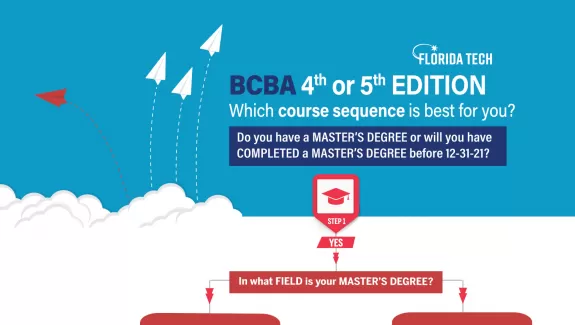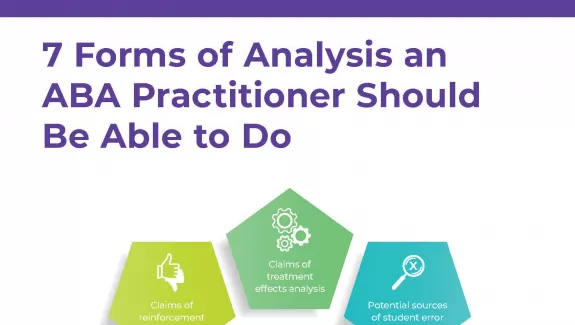
The Biggest Study Mistake You’re Making (And 4 Things You Can Do Instead)
Take a moment and get out your study supplies. I’ll wait. Let’s see… you have your books (of course), paper and pencils, the 4th Edition Task List ©, your favorite source of caffeine, and, likely, a stack of highlighters in an array of happy, DayGlo © colors.
Let’s talk about those highlighters for a moment. I’m going to ask you to just scoop them up and throw them in the trash. Highlighting is the biggest study mistake you could make.
But…why?
Highlighting is a ubiquitous study method. The idea is that, as you read through a text, you highlight important information. Identifying the important information is thought to improve comprehension and attending. Later, you can go back and review the most important material. That’s the theory, at least.
Research shows highlighting has little to no benefit on comprehension or retention of material (Miller & Malott, 2006). Coloring a text does not grant mastery of the content of the text. Highlighting is also redundant. Textbooks will contain all sorts of ways to clearly emphasize important material in a way that isn’t distracting, such as headings, underline, bolding, and italics.
If it doesn’t work, then why do so many people do it?
Good students use many, many study strategies. That makes it hard to tell which strategy actually contributed to their success. Highlighting has several qualities that contribute to its appeal: It’s quick and low-effort compared to other methods, like writing copious notes or making flashcards; it can be aesthetically pleasing; it provides an immediate permanent product of your work.
What harm could it do?
That’s a good question! It seems like highlighting is a low-risk strategy to include. I’ll admit, highlighters are not expensive tools. The biggest waste is your time. Time spent highlighting takes away from time spent reading and other study activities. Highlighting can also give a false sense of accomplishment or security. A thoroughly-marked passage may look like you have accomplished quite a bit, without having actually mastered the material. You can highlight well even if you are only skimming a text!
Highlighting a passage can also be distracting. Much like how a ‘busy’ room with other noise and people can make it hard to focus, reading text with a multitude of neon colors can be distracting. It can also encourage students to only read the highlighted portions, missing out on other necessary material.
Lastly, highlighting can create faulty stimulus control. I once met a student that could only define certain terms if the text was highlighted in pink! When the term was presented in plain black-and-white text, their fluency disappeared.
But I’m a visual learner!
No, you’re not. Learning styles have been debunked (Willingham, Hughes, & Dobolyi, 2015; Rohrer & Pashlet, 2012), meaning you are free to use proven study methods of any modality!
Fine! But if I shouldn’t highlight, what should I do instead?
- SAFMEDS for key terms
SAFMEDS stands for “Say All Fast, Minute Each Day, Shuffled.” This is more than just flashcards; it’s a fluency drill that will improve your discrimination skills, performance, and retention. When you encounter a term you want to highlight, make a SAFMEDS card for it instead! You can start by reading the term and saying the definition out loud. As you get more fluent, you can shake things up by reading the definition and saying the term out loud. You can also try sorting or matching tasks with your flashcards, such as sorting the dimensions of applied behavior analysis and the assumptions of science into two piles.
- Come up with your own examples
When you encounter terms or sentences you want to highlight, instead, try to come up with a scenario or situation that exemplifies the concept. For example, instead of highlighting Positive Reinforcement, write out a few contingencies, such as
“Sit!” → Dog Sits → Treat Delivered: Sitting increases in the future in the presence of the instruction to sit.
-
Rewrite in your own words
Many students copy words from PowerPoint slides or textbooks word-for-word for their notes or repeatedly highlight the same words and phrases. While it’s good to have the textbook definition on hand, it won’t help you much if you don’t understand it. When you are tempted to highlight or copy text, re-word it in your own words instead, or rephrase it below the copied text.
-
Explain the concept to someone else
When you encounter a concept you want to highlight, instead try to think of a way to explain the concept to someone else. This strategy works great with a study group that can provide feedback for your explanation and provide additional explanations for you. If you don’t happen to have a study group, you can try recruiting a patient significant other or nearby house pet to listen to your explanation.
These strategies represent the main tools I used in my own academic studies. These tools also happen to be supported in the literature and should allow you to more efficiently and effectively master the material. Even if I didn’t succeed in talking you out of the use of highlighters, I hope you shake up your study routine with these strategies.
Happy testing!


